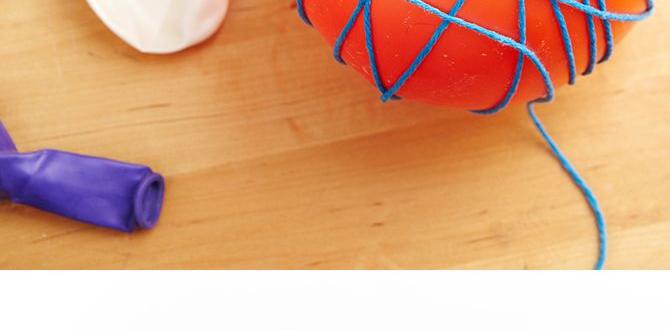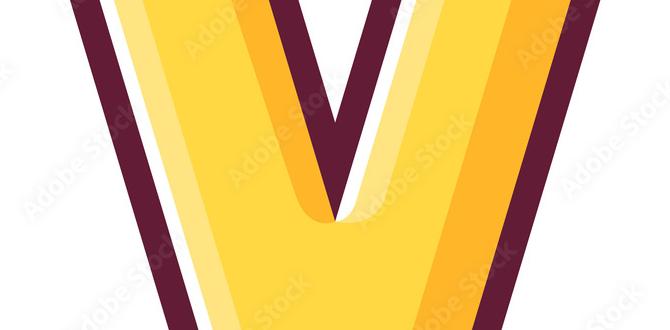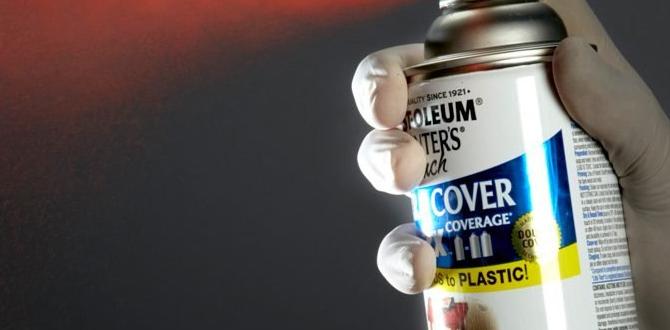Replace piston rings yourself with this easy guide! We’ll walk you through identifying worn rings, gathering tools, and successfully installing new ones for smoother engine performance.
Are you noticing your engine behaving oddly? Maybe it’s lost some pep, is using more oil than usual, or is puffing out a bit of blue smoke? These could be signs that your piston rings need some attention. Don’t let that worry you! Tackling this repair yourself is more achievable than you might think. We’re here to guide you through every step, making sure you have the knowledge and confidence to get your engine running like new again.
This guide is designed for DIY enthusiasts who want to dive into engine maintenance. We’ll break down the process into simple, manageable steps, ensuring you understand why each part is important. You’ll learn what to look for, what tools you’ll need, and how to perform the replacement safely and effectively. Let’s get your engine back in top shape!
Table of Contents
Why Replace Piston Rings? Understanding the Signs of Wear
Piston rings are small but mighty components inside your engine. They play a crucial role in sealing the combustion chamber, controlling oil, and transferring heat. When they wear out, your engine’s performance can suffer significantly.
- Sealing the Combustion Chamber: The rings create a tight seal between the piston and the cylinder wall. This seal prevents the high-pressure gases from escaping the combustion chamber during the power stroke. If the seal is broken, you lose compression, leading to a loss of power.
- Controlling Oil Lubrication: One set of rings (the oil control rings) is designed to scrape excess oil off the cylinder walls on the piston’s downstroke. This prevents oil from entering the combustion chamber, where it would burn and cause smoke and carbon buildup.
- Heat Transfer: Piston rings also help transfer heat from the piston to the cylinder wall, which is then cooled by the engine’s cooling system. Good heat transfer is vital for preventing the piston from overheating and seizing.
So, how do you know if your piston rings are the culprit? Here are the common symptoms:
- Increased Oil Consumption: If your engine is burning oil, you’ll notice it more often and might see blue smoke coming from the exhaust, especially when you accelerate. Worn oil control rings are a prime suspect here.
- Loss of Engine Power: Reduced compression means less power. You might feel sluggish acceleration, and the engine might struggle on hills.
- Engine Misfires and Rough Idling: Poor sealing can lead to uneven combustion, causing the engine to run rough or even misfire.
- Excessive Blow-by: This is when combustion gases leak past the piston rings into the crankcase. You might hear a hissing sound, or pressure could build up in the crankcase, potentially causing oil leaks.
- Fouled Spark Plugs: Burning oil can deposit carbon on your spark plugs, leading to premature fouling and ignition problems.
If you’re experiencing one or more of these issues, it’s time to consider replacing your piston rings. It’s a rewarding repair that can breathe new life into an older engine.
Gathering Your Tools: What You’ll Need for the Job
Before you start taking things apart, it’s essential to have all your tools ready. This will make the process smoother and prevent frustrating delays. Here’s a list of what you’ll typically need:
Essential Tools for Piston Ring Replacement
- Socket Set and Wrenches: You’ll need a range of sizes for bolts and nuts around the engine.
- Torque Wrench: Crucial for tightening components to manufacturer specifications. Overtightening or undertightening can cause serious damage.
- Piston Ring Compressor: This tool makes installing the piston with its new rings into the cylinder much easier.
- Piston Ring Expander Pliers: Used to safely remove old rings and install new ones onto the piston without bending or breaking them.
- Cylinder Bore Brush or Hone: For cleaning and preparing the cylinder walls.
- Feeler Gauges: To measure ring gap and side clearance.
- Scraper Tool: To remove carbon buildup from piston ring grooves.
- Gasket Scraper: To remove old gasket material.
- Oil Filter Wrench: You’ll likely need to remove the oil filter.
- Drain Pan: For collecting engine oil and coolant.
- Shop Rags and Cleaner: Lots of clean rags for wiping parts and spills. Engine degreaser can be helpful too.
- Gloves and Safety Glasses: Always protect yourself.
- Assembly Lube: Special lubricant for engine internals during assembly.
- Service Manual for Your Vehicle/Engine: This is your best friend! It contains specific torque values, clearances, and procedures for your exact engine. You can often find these at auto parts stores or online. For example, Haynes manuals are widely available.
Having the right tools on hand ensures you can perform the job correctly and efficiently. Don’t underestimate the importance of a good service manual; it’s your blueprint for a successful repair.
Step-by-Step Guide: How to Replace Piston Rings
Replacing piston rings usually involves more than just swapping the rings. You’ll typically need to remove the cylinder head and the oil pan, and take the piston out of the cylinder. This can seem daunting, but we’ll go through it step by step. Always refer to your vehicle’s service manual for specific details related to your engine, as procedures can vary.
Safety First! Make sure the engine is completely cool. Disconnect the battery to prevent any accidental electrical issues.
Step 1: Prepare the Engine and Disassemble
You’ll need to gain access to the pistons. This usually means removing components above and below the engine block.
- Drain Fluids: Drain the engine oil and coolant into appropriate containers.
- Remove Top-End Components: This typically involves removing the intake and exhaust manifolds, the cylinder head, and any associated wiring or hoses connected to the head.
- Remove Oil Pan: You’ll need to remove the oil pan from the bottom of the engine. This gives you access to the connecting rod caps.
- Remove Connecting Rod Caps: Identify which piston you are working on. You’ll see the connecting rod attached to the crankshaft. Carefully remove the nuts and bolts that hold the connecting rod cap in place. Keep the bearing shells with their respective caps.
Step 2: Remove the Piston from the Cylinder
Once the connecting rod cap is off, you can push the piston out.
- Push Piston Up: Gently push the piston and connecting rod assembly up and out of the top of the cylinder bore. You might need to tap the connecting rod lightly with a rubber mallet if it’s stuck.
- Mark Components (Optional but Recommended): Mark the piston and connecting rod cap with the cylinder number they came from. This is crucial if you plan to reuse them, but in most ring replacement scenarios, you’re rebuilding the engine.
- Clean Piston: Lay the piston and connecting rod assembly aside.
Step 3: Remove Old Piston Rings
With the piston out, you can now remove the old rings.
- Identify Ring Types: There are usually three rings: the top compression ring (often tapered or keystone shaped), the second compression ring (usually rectangular), and the oil control ring (which might be a two-piece unit with expander).
- Remove Rings Carefully: Use a piston ring expander tool or carefully fingernails to gently spread each ring and slide it off the piston. Do not use pliers or screwdrivers, as you can easily break or score the piston. Work from the top down.
- Clean Ring Grooves: Once all rings are off, thoroughly clean the ring grooves on the piston. Carbon buildup is common here. Use a specialized groove cleaning tool or a piece of an old, broken piston ring. Ensure the grooves are completely clean and free of debris. Be careful not to scratch the piston itself.
Step 4: Install New Piston Rings
This is where your new rings go on. Pay attention to their positions and orientation.
- Check Ring Gap: Before installing the new rings, check their gap. Place a ring into the cylinder bore where it will be used, about halfway down. Use the piston to carefully push the ring squarely into the bore. Measure the gap between the ends of the ring using a feeler gauge. Compare this gap to the specifications in your service manual. If it’s too large, you may need different rings. If it’s too small, you might have to file it carefully if your manual allows specific filing procedures – most modern rings are not filed.
- Install Oil Control Ring First: Start with the oil control ring assembly. Typically, there’s a lower rail, a spring expander, and an upper rail. Install the expander into the groove, then place the rails over it.
- Install Second Compression Ring: Place the second compression ring onto the piston, ensuring the correct side faces up (there’s usually a dot or marking).
- Install Top Compression Ring: Install the top compression ring. Again, note any markings indicating the correct orientation. Ensure it’s seated properly.
- Verify Ring Seating: After all rings are on, spin each ring to ensure it’s seated correctly in its groove and moves freely.
Step 5: Prepare the Cylinder Walls and Reassemble
Before putting the piston back into the cylinder, you must prepare the cylinder wall.
- Inspect Cylinder Walls: Check the cylinder walls for any scoring, damage, or excessive wear. If there’s significant damage, the cylinder may need to be bored and honed, or the cylinder liner replaced. For minor imperfections and re-ringing, a light hone is essential.
- Hone the Cylinder (Recommended): If you’re not going to bore the cylinders, a light hone is crucial. Use a cylinder hone with the appropriate grit stones to lightly deglaze the cylinder walls. This creates a new surface for the rings to seat against and helps remove any old carbon. Wash the cylinder thoroughly with soap and water, then with a solvent like mineral spirits, and wipe it clean and dry with lint-free cloths. Ensure no grit remains. You can find excellent guides on proper cylinder honing techniques from reputable sources like Engine Builder Magazine.
- Lubricate Piston and Rings: Apply a generous amount of assembly lube to the piston skirts, the sides of the piston rings, and the connecting rod bearings.
Step 6: Install the Piston Back into the Cylinder
This is a critical step, and the piston ring compressor tool is your best friend here.
- Position the Piston: Orient the piston correctly with the rings compressed. Ensure the gap on the top compression ring is not lined up with the gap on the second compression ring, and avoid lining them up with the gap on the oil control ring expander if possible (stagger the gaps).
- Use the Ring Compressor: Place the piston ring compressor tool over the rings, ensuring it’s snug against the piston.
- Insert into Cylinder: Carefully guide the piston (with the compressor tool) into the cylinder bore. The chamfered edge of the cylinder bore will help guide it.
- Tap Piston In: Gently tap the top of the piston with a wooden handle or rubber mallet to guide it into the bore. The ring compressor will exert pressure, allowing the piston to slide past it.
- Align Connecting Rod: As the piston enters the cylinder, align the connecting rod with the crankshaft journal.
- Reinstall Connecting Rod Cap: Place the bearing shells back into the connecting rod cap and the rod itself. Carefully slide the cap onto the connecting rod bolts.
- Torque Connecting Rod Bolts: Tighten the connecting rod cap bolts to the manufacturer’s specified torque value using your torque wrench. Refer to your service manual for the exact torque sequence and specification.
Step 7: Reassemble the Engine
Now, you essentially reverse the disassembly process.
- Install Oil Pan: Clean the oil pan mating surface and install a new gasket, then bolt the oil pan back onto the engine.
- Install Cylinder Head: Install the cylinder head with a new head gasket. Tighten the head bolts in the sequence and to the torque specifications outlined in your service manual.
- Reinstall Manifolds and Other Components: Reconnect the intake and exhaust manifolds, fuel lines, coolant hoses, electrical connectors, and any other parts you removed.
- Install New Oil Filter: Always install a new oil filter when changing the oil.
- Refill Fluids: Refill the engine with the correct type and amount of engine oil and coolant.
- Reconnect Battery: Reconnect the battery.
Step 8: Start the Engine and Break-in
This is the moment of truth!
- Initial Start: Start the engine and let it run for a few minutes, checking for any unusual noises or leaks.
- Break-in Procedure: Follow the manufacturer’s recommended break-in procedure for new piston rings. This typically involves varying engine speeds, avoiding prolonged idling, and avoiding heavy acceleration for the first few hundred miles or hours of operation. This allows the new rings to properly seat against the cylinder walls for optimal sealing and performance. For general guidance on engine break-in, resources from organizations like the Specialty Equipment Market Association (SEMA) provide valuable insights.
It’s a detailed process, but by taking it one step at a time and following your service manual, you can successfully replace your piston rings and restore your engine’s health!
Understanding Piston Ring Types and Their Functions
Not all piston rings are created equal. They each have a specific job to do to keep your engine running smoothly and efficiently. Understanding these roles can help you appreciate the precision involved in engine design.
| Ring Type | Location | Primary Function | Common Material/Design |
|---|---|---|---|
| Top Compression Ring | Groove closest to the piston crown | Forms the primary seal for combustion gases, transferring heat from the piston to the cylinder wall. | Cast iron, steel alloys. Often tapered or keystone shape to prevent sticking. Sometimes coated with molybdenum for durability and reduced friction. |
| Second Compression Ring | Middle groove | Acts as a secondary seal for combustion gases, helps scrape combustion byproducts and oil from the cylinder wall. | Cast iron or ductile iron. Usually rectangular in shape. |
| Oil Control Ring | Bottom groove(s) | Controls the amount of oil on the cylinder walls, scraping excess oil back into the crankcase. | Typically consists of two thin steel rails (upper and lower) and a spring-type expander between them in the groove. Sometimes a single-piece cast iron ring. |
The interaction between these rings and the cylinder wall is vital. Even slight damage or wear on either component can lead to performance issues. When replacing rings, it’s also a good time to inspect the cylinder walls for any signs of damage or significant wear. If the cylinder walls are significantly worn or scored more than about 0.003-0.005 inches (0.08-0.13 mm), they may need to be re-machined (honed or bored) to match the new rings properly. This is a much more involved process and often requires professional machining services. For most DIY re-ring jobs on engines with mildly worn cylinders, a good deglaze hone is sufficient to provide a proper seating surface for the new rings.
Maintaining Piston Ring Health: Prevention is Key
While this guide focuses on replacement, a little bit of preventative maintenance can go a long way in extending the life of your piston rings and your engine.
- Regular Oil Changes: Fresh, clean oil lubricates and cools the engine components, including the piston rings, and carries away contaminants that can cause wear.
- Use the Right Oil: Always use the oil viscosity and type recommended by your vehicle manufacturer. Using oil that is too thin or too thick can hinder proper ring seal and lubrication.
- Avoid Frequent Short Trips: Short trips don’t allow the engine to reach optimal operating temperature, which can lead to moisture and combustion byproducts accumulating, potentially fouling rings and contaminating oil.
- Proper Engine Break-in: After major engine work, including piston ring replacement


